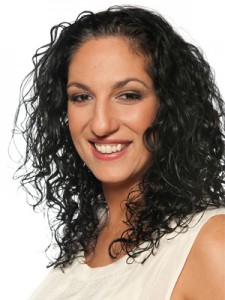CNN recently featured a story of a social science experiment conducted by Dr. Akbar Ahmed, professor and chair of Islamic Studies at American University in Washington.
…[t]he project that’s been dubbed Journey into America…is an offshoot of a 2006 endeavor that took him, and a few of those traveling with him now… into the Muslim world abroad. That initial trip involving visits to mosques, madrassas (religious schools) and private homes from Syria to Indonesia became the basis of Ahmed’s book, “Journey into Islam: The Crisis of Globalization.”
“These questions Americans were asking [about Muslims] could not be answered without Americans looking at themselves … and looking at Muslims in the context of their own culture and society,” the professor explained. The group needed “to talk to Muslims and examine what they knew about American culture, American society and how they actually adjusted or assimilated or integrated — or not — into larger American society.”

The study includes not only interviewing Muslims around the United States but also having affiliates pose as Muslims, including Hailey Woldt, seen here. The article tells us of a portion of the experiment in which Woldt is in Arab, Alabama (oh, the irony) in “Muslim dress.”
“I expected people to say, ‘What is this terrorist doing here? We don’t want your kind here,’ ” said Woldt, a 22-year-old blue-eyed Catholic, recalling her anticipation before stepping into a local barbecue joint. “I thought I wouldn’t even be served.”
Instead, Woldt’s experiment in social anthropology opened her own eyes. Apart from the initial glances reserved for any outsider who might venture through a small-town restaurant’s doors, her experience was a pleasant one.
Reading this I had the same hesitations and concerns Jezebel contributor Megan did.
Woldt isn’t going to get looks or questions the same way an Arabic Muslim woman or an African Muslim woman would because she’s white and, with that, comes a basic assumption that she’s choosing to wear a garment for reasons that are her own. I mean, no one is going around arguing that the U.S. government needs to free Hasidic Jewish women from the confines of their wigs and modest clothing, right? No one is trying to get Mennonite or Amish women to free themselves from patriarchal religious structures that have them clothed in bonnets and long pioneer-woman type dresses (in some cases). No one is trying to get nuns to ditch their habits or their vows of chastity. And, yet, there is a very basic assumption that, for the (mostly) brown women who wear hijabs, abayas or niqabs for religious reasons, that they must be freed from the yokes of their oppressors — even in this country. Because, of course, if they knew they could choose, of course they wouldn’t.
Megan hits the nail on the head. As a social scientist myself, I can say that this is a strong criticism of the experiment if non-White Muslim women are no also affiliates and places in similar situations. In and of itself, it does provide readers with an insight into the experiences of White, hijab/abaya-wearing, Muslim women and this is worth knowing as part of the larger picture. Nonetheless, having brown or black Muslim women, both with and without the abaya and hijab, should be a necessary component of the project if one wanted to make any conclusions about the experiences of affiliated females.
The project overall sounds fascinating and, with a scholar like Dr. Akbar Ahmed behind it, is sure to be educational and enlightening. Let’s just hope the diversity of the Muslim community, including among Muslim women, is also reflected in the final results.











